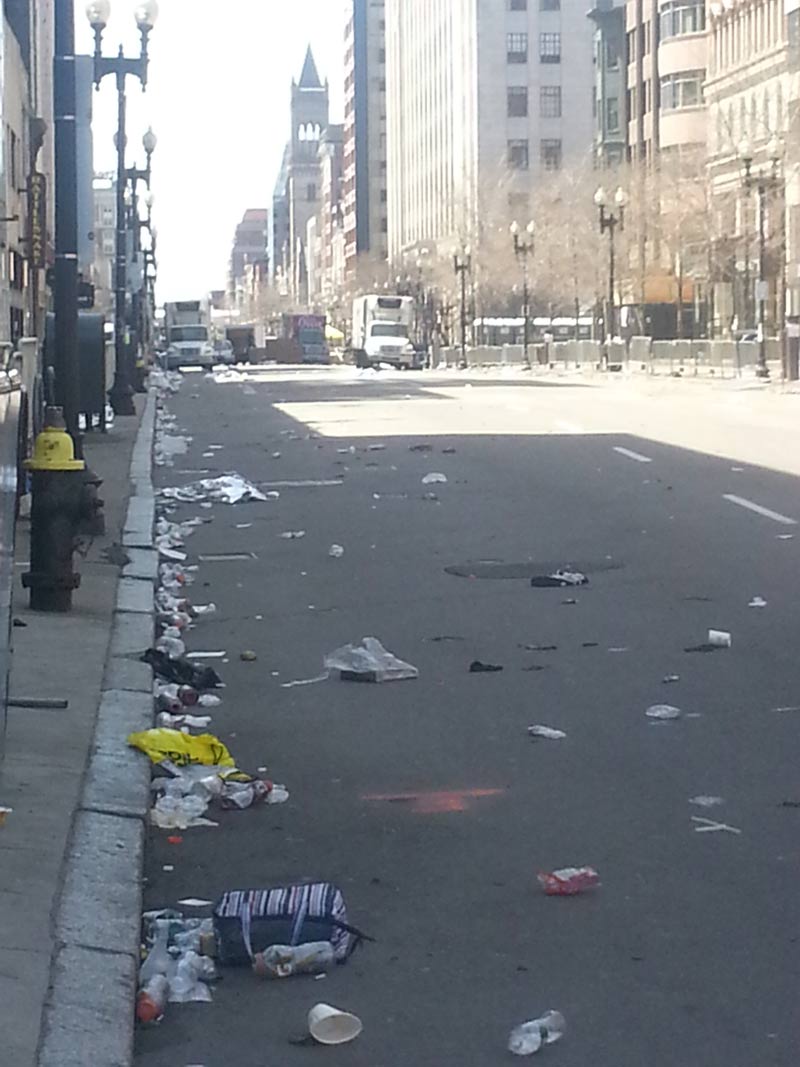
Healing a Nation After Boston Bombing Trauma: Op-Ed

Alan Manevitz is a clinical psychiatrist at Lenox Hill Hospital in New York and has been a volunteer onsite for 9/11, Hurricane Katrina, TWA 800 and other national tragedies. He is an expert on trauma, PTSD, anxiety and depression and he contributed this article to LiveScience’s Expert Voices: Op-Ed & Insights.
This last week was surreal. We were traumatized as a horrific bombing killed and injured many; we felt the impact of social media during a disaster as an alerting and informative tool, and as a tool for spreading false rumors and, ultimately, as a tool for calming and engaging us; we actively participated in the identification of the perpetrators of this heinous crime; we experienced a major city undergo "lockdown"; we watched as one suspect was killed, and one was captured on live TV.
Everyone watching the horrific events — seeing bombings and mangled, bloodied, crying people on TV and the Internet — experienced trauma. It is normal to have an acute stress reaction, which consists of anxiety, hyper-vigilance, greater startle response, grief and horror for the terrible events experienced by the victims and their families and wonder about our own safety and that of our families. These emotions were normal.
People who have experienced trauma in the past or individuals who suffer from existing post-traumatic stress disorder (PTSD), anxiety and depression are more vulnerable to the trauma and may experience exacerbations of their past PTSD or other symptoms.
As we watched transfixed over the live manhunt and shootouts leading up to the lockdown, we were both desensitized by past experiences of viewed violence from computer games and movies, but at the same time we were sobered by the reality of what guns and homemade explosives can really do to innocent bystanders and how much pride and security we have as our designated protectors and heroes work on our behalf to make us secure.
On the plus side of the lockdown, we saw the results of our government and police forces working smoothly together to provide medical and psychological first aid and physical safety to our citizens in Boston. This brought us comfort. In addition, staying home for this initial period of time gave families and friends the time and opportunity to feel safer and to comfort ourselves and our children. This was a real and extraordinary event. Reframed positively, we allowed our police and FBI the time to do their job while we did our job at home. [Boston Lockdown: What It's Like Inside]
In addition, we are a more experienced and engaged citizenry post-9/11, as opposed to 9/11 when we had a more passive and naïve citizenry. Many technologies of communication: Twitter, instantaneous photography and texting were essentially nonexistent at the time of 9/11. Citizens in New York (and everywhere else) stayed home and watched the news unfold on TV. People bonded initially over their fears and then we empowered ourselves over our anger.
Get the world’s most fascinating discoveries delivered straight to your inbox.
When people are traumatized, they feel powerless. That powerless feeling can become maladaptive feelings of helplessness that turn into anxiety, panic and depression. Or we become angry to empower ourselves. Being proactive is adaptive; that is why there was such an outpouring of spontaneous offers of aid, money and memorials — the desire to do something on 9/11 resulted in lines around the block as people tried to donate their own blood in order to help. I was "lucky" — I was able to be an active volunteer on the World Trade Center site from day one; many of my patients supported me, and emotionally felt better as I was their proactive representative.
In Boston, though people were in lockdown, they were engaged electronically, and therefore felt proactive. They were both engaged as a community connecting and soothing each other and engaged as people were searching their own photos or others. There was record traffic to the FBI site minutes after they asked for help. While people were scared, upset and traumatized, there was an informed calmness. We were watching our designated representatives (police, FBI) doing their job in front of us. They were engaged with us and they were asking our help, which allowed us to stay engaged.
Of course, over time, a lockdown will produce extra stress and should be limited to 24 to 48 hours. Luckily, in Boston, it was less than 24 hours. As a guideline, families should not sit at home and watch the news loops over and over. However, they should not be avoidant: Parents should watch with their children and answer their questions honestly and openly. Parents also should do other activities at their home with their family. Children can write get-well cards if they want to do something to help. Make sure you stay hydrated with water, and eat and get rest. Don’t stay up all night watching images over and over again on the TV News. Do not drink excess alcohol.
The general public understood the rationale for the initial lockdown. Being informed, less naïve and understanding the "big picture" vs. the "immediate picture" helps us stay calm, in general. For example, our children may ask us if "the bad men can get us in our schools?" We have to be able to explain to ourselves first, and then our children, that while there are bad men, there are many more good men and women out there helping and protecting us.
Following immediate traumas or lockdowns, getting back to our normal routine is most important for our morale and mental health. Children, especially, need a return to routine. The key to understanding how to handle stress is to distinguish between the possibility of an event (less than 1 percent) and the probability of an event. Panic and anxiety increases when we experience a possibility as if it is a probability. Another example: A teenager may ask, "Is it is safe to run in my track meet?" We need to explain that while the possibility exists of a bad thing happening, the probability is safe and therefore encourage ourselves to go back to that routine.
Many countries have lived with realistic concerns of terror over decades and lifetimes (for example, Israel and Ireland). We all have been cumulatively upset and traumatized over this last year by seeing the safe family institutions of movie theaters, elementary schools and the neighborly good feelings of Marathon Day tragically disrupted by deranged or malicious individuals or terrorists with their disturbed and distorted agendas. We are frustrated by not being able to provide the innocence and safety of childhood as remembered from the past or portrayed in TV, books and movies. [Inside Twisted Terrorist Minds — Where Is the Empathy?]
The United States is relatively late to the game in getting used to living with the cognitive dissonance of dialectical opposites: wanting ourselves to feel safe yet wanting our freedom and privacy to do what we want, when we want, and how we want. We cringe at encroachments or discussions on our independence: national identity cards, increased screenings at public places of gathering, profiling — but, we also want to feel more secure. We fear totalitarianism but we are voting more monies to create more shades of "1984" than ever before. We are comforted to see the new technologies of face recognition and infrared detection, to have a cooperative citizenry provide the video to help bring the progenitors of these heinous crimes to justice, but at the same time, we realize we are coming under video surveillance "for our own good" by third parties everywhere but in our own homes. And even in our own homes, Google and others are mining Big Data for patterns of Internet use that reveal information about an individual user or families.
Having the natural capacity or learning the skills of perspective, understanding to use probability/possibility thinking and using reality (in other words, stating the positive and then acknowledging the negative) to avoid catastrophizing all leads to resilience and lessening the odds of these acute stress reactions turning into PTSD.
The views expressed are those of the author and do not necessarily reflect the views of the publisher
